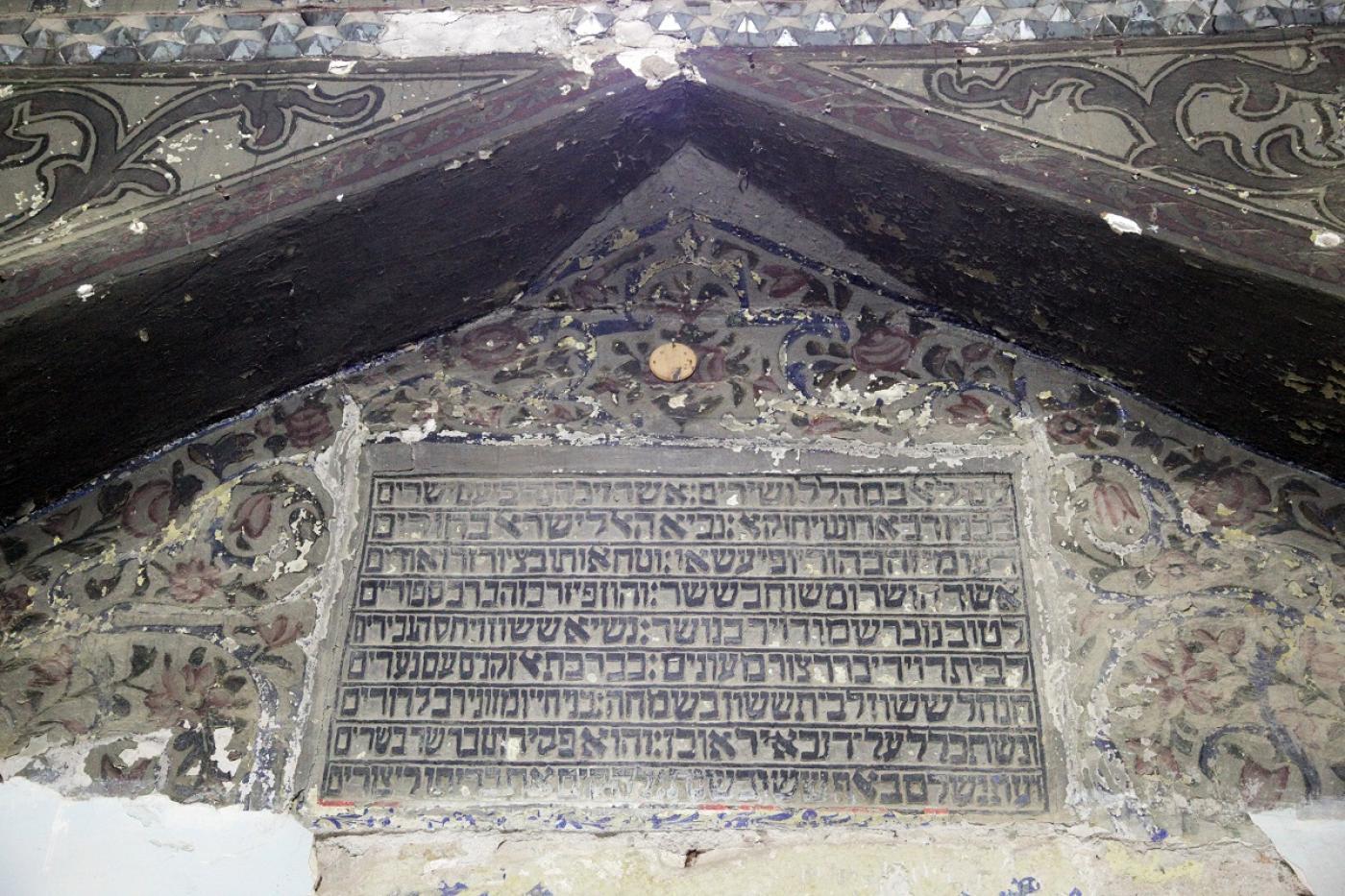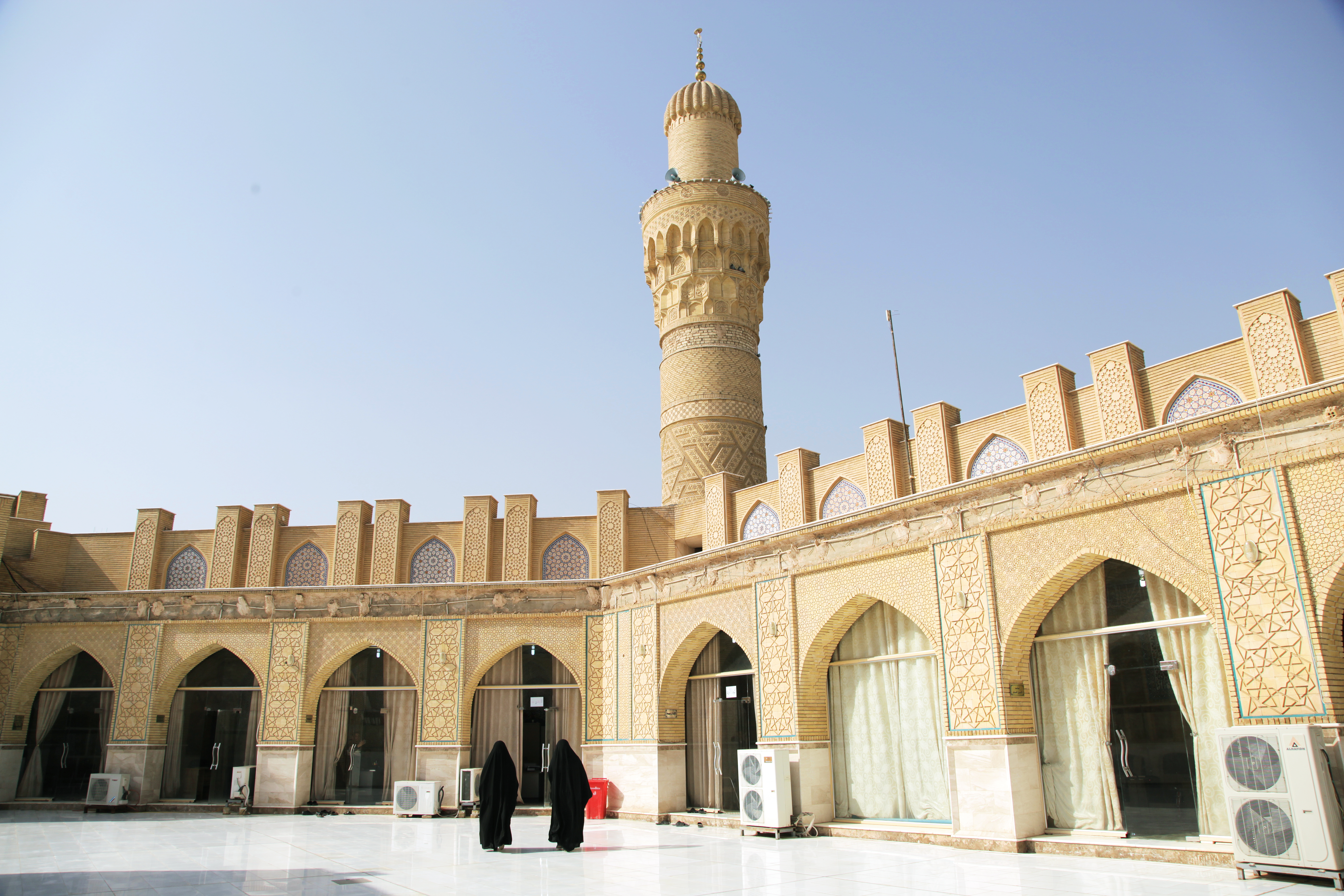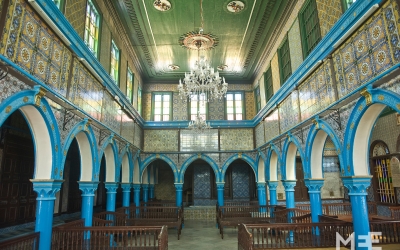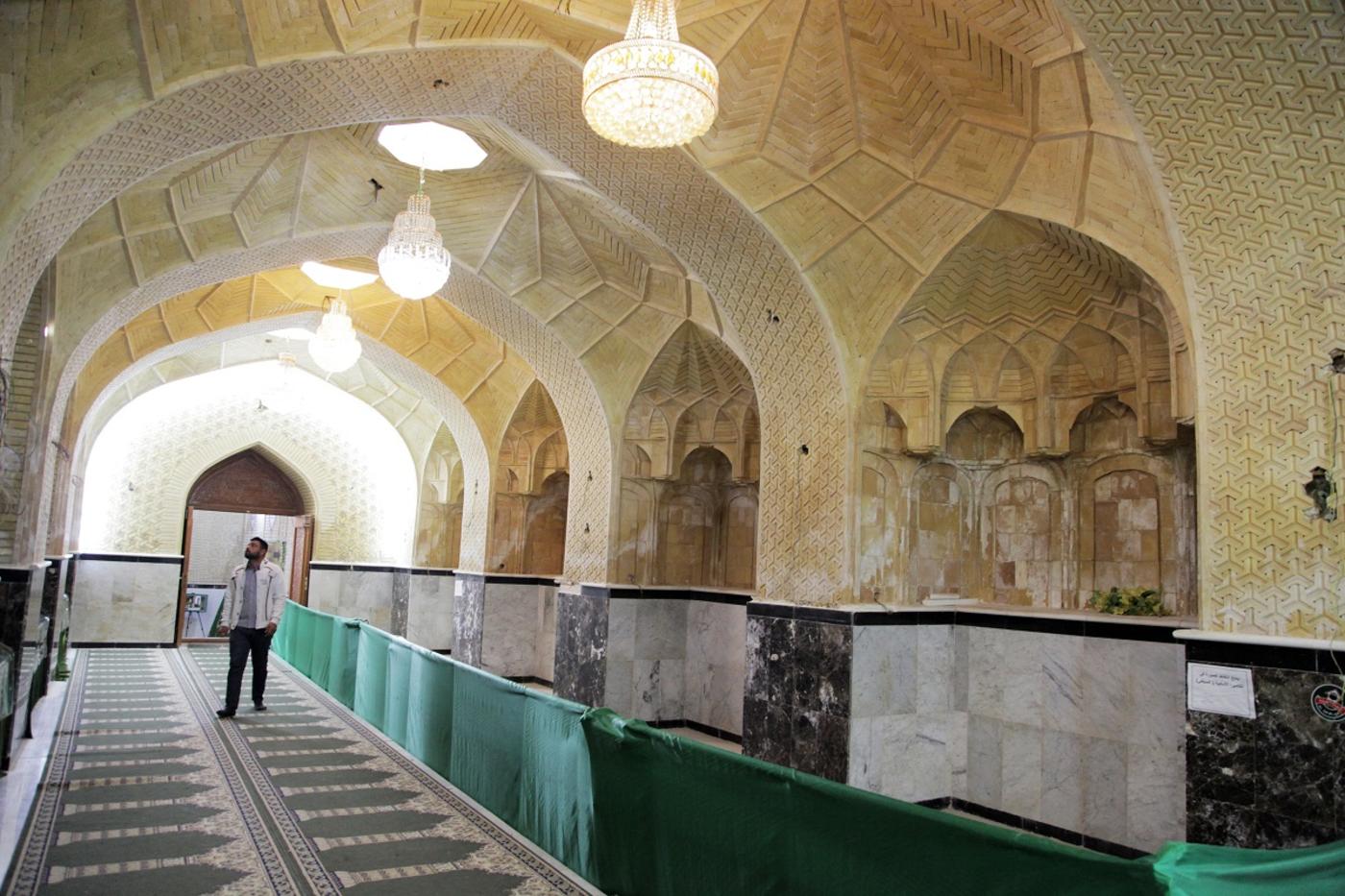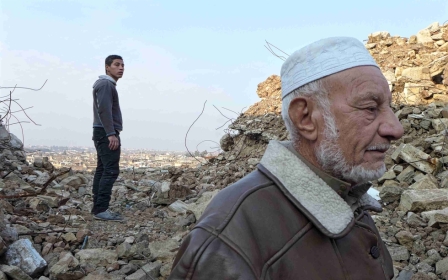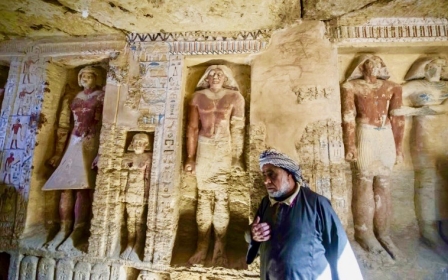Babylon's forgotten tomb, a symbol of Iraq's ancient Jewish heritage

At the end of a dusty track behind a bazaar, once known as "Daniel's Market," stands a honey-coloured brick complex.
In many ways, it appears similar to the shrines, mosques and graveyards that span out across the desert of southern Iraq, some two hours' drive south of Baghdad.
'Those who come to us are of different nationalities. We do not care about their religion'
- Haytham Alkhafaji, shrine keeper
But this one is unique.
It houses the 2,600-year-old tomb of the Prophet Ezekiel - Dhul Kifl in Arabic - inside the 800-year-old Annukhailah Mosque complex.
Inside the chamber housing Ezekiel’s tomb, the worn remains of turquoise star-shaped tiles, and floral designs in daffodil yellow and rose pink cover the exposed stone walls. Green carpets line the floor.
New MEE newsletter: Jerusalem Dispatch
Sign up to get the latest insights and analysis on Israel-Palestine, alongside Turkey Unpacked and other MEE newsletters
Above the doorway, tiles bear the Hebrew inscription: “This is the burial site of our master Ezekiel.” And hymns in the same language are inscribed elsewhere on the walls. The tomb itself is draped in a green cloth carrying the Arabic for “Peace be upon Ezekiel.”
What remains
During Saddam Hussein’s era of Arabisation, the Hebrew inscriptions were covered in white paint, but have since been uncovered again.
“All of what you see out is from the Old Testament. This candlestick represents the Jewish religion,” says assistant shrine keeper Haytham Alkhafaji, pointing at a menorah painted on the wall. “And these are the remains of Hebrew writings.”
Significant in Islam, Christianity and Judaism, the Prophet Ezekiel was based in Jerusalem before being exiled to Babylon in modern-day Iraq.
The book of the Bible containing his visions is one of the most significant Old Testament volumes, and his name crops up twice in the Quran.
The place is quiet today, and the sound of gentle birdsong rises from the surrounding greenery. Sunlight bounces off the mosque complex’s three minarets - one of which leans like the Tower of Pisa - and a conical Seljuk-era dome with honeycomb-shaped detail.
The tomb is a sign of the religious diversity that once existed in Iraq, which gained independence from Britain in 1932. On other days, though, some 400 visitors pass through, according to Alkhafaji.
Between management and access tussles involving local Jewish and Muslim communities, Jews used to openly make pilgrimages here, particularly between Jewish New Year (Rosh Hashanah) and Yom Kippur. In a side room, a collection of black-and-white photos shows Iraqi Jews from the local area.
Iraq had a Jewish population of some 150,000 people in the mid 20th century, and wealthy members of the community from Baghdad built houses in the town of Kifl, which neighbours Ezekiel’s tomb.
But their numbers have dwindled to next to zero: most fled or were airlifted to Israel, following persecution and conflict.
Shared shrine
Today, managers at Ezekiel’s tomb say visitors of all faiths are welcome and that they do not ask visitors about their sect or religion.
“Those who come to us are of different nationalities. We do not care about their religion,” said Alkhafaji.
“The site is a fascinating place as well as essentially the most important Jewish pilgrimage site in modern-day Iraq,” said Alex Shams, who is researching shrines for his PhD in anthropology at the University of Chicago.
He visited Ezekiel’s tomb last November during Arba’een, the most significant annual Shia Muslim pilgrimage that sees millions of the faithful walk from Najaf to Karbala.
“This is a shared shrine … historically this was very common across the region,” he continued. “Existence of such sites is a reminder that such coexistence is natural and that the loss of a fabric of religious diversity is not.”
Ezekiel’s tomb is the oldest and most unique feature at the complex as a whole, which sits behind a workaday market where a promenade of shops and carts proffer everything from hot flatbreads and smoking kebabs to sweets oozing with syrup.
Shia are doubly drawn to the site, as they believe Imam Ali visited some time before his death in 661 AD. It also lies on the road between the major pilgrimage centres at Najaf and Karbala, so makes a convenient en route stop-off.
Lack of funds
A preservation effort - funded by various bodies including the Iraqi Shia Endowments Office, Babel Governorate and the Department of Engineering Affairs - has bolstered the complex. But site authorities say they need further funds - millions of dollars - for further rehabilitation, restoration and expansion work.
State funding is not enough to tarmac the road leading to the site or enhance tourist facilities to make it a real attraction for Jews, Christians and Muslims from around the world, according to Alkhafaji.
“We, as the shrine administration, lack the money to rebuild the place, to pave the road, and to make space for parking cars. We also lack money for advertising so that the message reaches other countries,” he told Middle East Eye.
“There are activists who do some of these things, but the state must take care of these religious and archaeological sites."
Western governments still largely advise against all or all but essential travel to Iraq, citing security risks, but UK-based pilgrimage operators offering trips to the country have reported a rise in client numbers as the battle against Islamic State has drawn to a close.
Observers say part of the tomb’s importance lies in defying Zionist versions of events. Israeli authorities have created a network of heavily promoted ancient and archaeological sites that place Jewish history within territory they control.
In reality, alongside Ezekiel’s tomb, the tombs of important figures in Judaism are spread across the region, including the tombs of Daniel and Esther in Iran.
Shams said the upkeep of sites holy to Jews outside of Israel and occupied Palestine was a way of fighting back against Israeli narratives.
“Archaeology has become a powerful colonial tool in the hands of the Israeli state, and this is an urgent reminder that open access to shared religious sites must be maintained,” Shams said, citing the example of Rachel’s Tomb at Bethlehem. Israeli authorities have tried to claim that site as Israeli “national heritage”, and Palestinians require a permit to enter.
All the same, the management of Ezekiel’s tomb has at times proved controversial.
According to some historians, its Jewish heritage has been diminished and damaged since Muslim authorities took over in 1952. They believe the expansion and renovation of the mosque have seen Quranic verses and inscriptions encroach into Ezekiel’s tomb chamber, and have caused damage to surrounding Jewish houses.
“Since the American occupation of Iraq in 2003 and the fall of Saddam Hussein’s regime...the Iraqi authorities undertook to redevelop the ancient part of Kifl and the tomb complex which was in a state of disintegration,” wrote Zvi Yehuda, director of the research institute of the Israel-based Babylonian Jewry Heritage Centre, which records the history of Iraqi Jews.
“The local Muslims used this as an opportunity to add Muslim symbols and erase Jewish signs, in order to turn the old synagogue courtyard (the "outer courtyard") into a Muslim place of prayer,” he added, in his 2017 book, The New Babylonian Diaspora: Rise and Fall of Jewish Community in Iraq.
Protecting heritage
He also said the Iraqi Jewish diaspora community was shut out of discussions around renovating the tomb post 2003, on grounds that it was an “internal Iraqi matter”.
Some aspects of the complex do appear to focus on making it a Shia pilgrimage site. Women must wear full chador - the black cloaks worn by pious Shia Muslims - to visit Ezekiel’s tomb, and a maqam - a shrine - surrounded by scarlet red lighting and gold metalwork marks Imam Ali’s 7th century visit to the site. Elsewhere, posters carry prayer instructions in Arabic.
But site authorities say they want to protect its Jewish heritage. “We kept it and do not want anyone to hurt it. It is an Iraqi heritage and an Iraqi history and we are proud of it,” Alkhafaji said, adding that finances were the main barrier to further preservation efforts.
“It is important for citizens to know their civilisation, but the economic conditions are reflected negatively on the monuments. When money is available, things will be easy.”
This article is available in French on Middle East Eye French edition.
Middle East Eye delivers independent and unrivalled coverage and analysis of the Middle East, North Africa and beyond. To learn more about republishing this content and the associated fees, please fill out this form. More about MEE can be found here.


